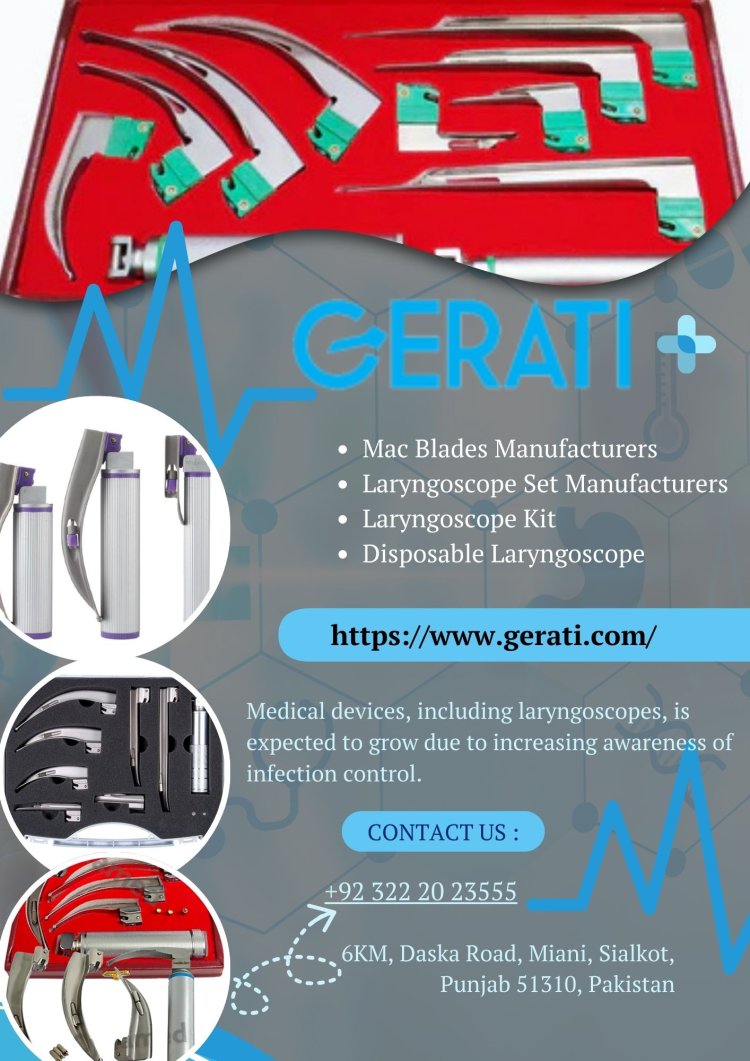Miller Laryngoscope Blades Anesthesiology Emergency Medicine
Miller Laryngoscope Blades

Miller Laryngoscope Blades: A Comprehensive Guide
Introduction
Miller Laryngoscope Blades is a critical procedure in anesthesiology, emergency medicine, and critical care, allowing healthcare professionals to visualize the larynx and facilitate tracheal intubation. Among the various laryngoscope blades available, the Miller laryngoscope blade is widely recognized for its efficiency in managing difficult airways, particularly in pediatric and neonatal patients.
This article provides a comprehensive guide to Miller laryngoscope blades, covering their history, design, advantages, applications, comparisons with other blades, and tips for effective use.
History and Development of Miller Laryngoscope Blades
The Miller blade was first introduced in 1941 by Miller Laryngoscope Blades Dr. Robert A. Miller. It was designed to address the limitations of the existing curved laryngoscope blades, such as the Macintosh blade. Miller’s objective was to create a straight blade that would provide better control over the epiglottis, particularly in small children and neonates.
Since its introduction, the Miller laryngoscope blade has become a staple in airway management, particularly in scenarios where indirect lifting of the epiglottis is required to visualize the vocal cords.
Design and Features of Miller Laryngoscope Blades
The Miller blade is characterized by its straight, narrow design and a curved distal tip. Unlike curved blades, which position themselves in the vallecula (the space between the tongue and epiglottis), the Miller blade is designed to directly lift the epiglottis, providing a clear, unobstructed view of the glottis.
Key Features:
-
Straight blade with a slightly curved tip: Allows for direct manipulation of the epiglottis.
-
Various sizes available: Ranges from size 00 (neonatal) to size 4 (adult) to accommodate different patient populations.
-
Narrow profile: Ideal for small oral cavities and pediatric patients.
-
Made from stainless steel or fiber-optic materials: Ensures durability and optimal illumination.
-
Compatible with fiber-optic or LED lighting systems: Provides enhanced visibility during intubation.
Advantages of Using Miller Laryngoscope Blades
The Miller blade is preferred by many anesthesiologists and emergency medical professionals due to its unique advantages:
1. Superior Control Over the Epiglottis
Since the Miller blade directly lifts the epiglottis, it provides an unobstructed view of the glottis, making it easier to pass the endotracheal tube (ETT).
2. Ideal for Pediatric and Neonatal Patients
The narrow, straight design makes it perfect for infants and small children, where curved blades may not be as effective.
3. Suitable for Difficult Airways
Miller blades are often preferred in cases where limited mouth opening, obesity, or anatomical abnormalities make airway visualization challenging.
4. Fiber-Optic Compatibility
Modern Miller blades are equipped with fiber-optic or LED lighting, ensuring better illumination in dark or complex airway situations.
Applications of Miller Laryngoscope Blades
Miller blades are used across various medical fields, including:
1. Anesthesia
-
Used for endotracheal intubation in operating rooms.
-
Provides a reliable approach for managing airway in pediatric anesthesia.
2. Emergency Medicine
-
Essential for securing the airway in trauma patients.
-
Frequently used in prehospital emergency care (ambulance/paramedics).
3. Intensive Care Units (ICUs)
-
Used for intubation in critically ill patients.
-
Helpful in managing difficult intubations in ICU settings.
4. Neonatal and Pediatric Care
-
The smallest Miller blade sizes (00, 0, 1) are widely used for neonates and premature infants.
-
Ensures precise control when intubating tiny airways.
Miller Blade vs. Macintosh Blade: Which One to Choose?
When choosing between the Miller blade and the Macintosh blade, healthcare professionals consider the patient’s age, anatomy, and clinical scenario.
| Feature | Miller Blade | Macintosh Blade |
|---|---|---|
| Blade Shape | Straight with a curved tip | Curved |
| Lifting Mechanism | Directly lifts the epiglottis | Positions in the vallecula to indirectly lift the epiglottis |
| Best for | Neonates, pediatrics, difficult airways | Adult patients with normal airway anatomy |
| Ease of Use | Requires more skill to maneuver | Easier for beginners |
| Common Settings | Neonatal ICUs, difficult airways | General anesthesia, routine intubation |
Choosing the Right Blade:
-
For pediatric patients and difficult airways → Miller Blade.
-
For standard adult intubations → Macintosh Blade.
How to Use a Miller Laryngoscope Blade Effectively
Using a Miller blade requires proper technique and practice to ensure successful intubation. Here’s a step-by-step guide:
Step 1: Proper Positioning
-
Place the patient in a sniffing position (head extended, neck slightly flexed) for optimal airway alignment.
Step 2: Insert the Blade
-
Hold the laryngoscope in your left hand.
-
Insert the Miller blade midline, keeping the tongue to the left side.
Step 3: Lifting the Epiglottis
-
Advance the blade until the tip reaches the epiglottis.
-
Lift the epiglottis directly to expose the vocal cords (do NOT rock back, as this can cause trauma).
Step 4: Visualizing the Glottis
-
Ensure a clear view of the vocal cords before attempting intubation.
-
Use fiber-optic lighting for better visibility in dark airways.
Step 5: Passing the Endotracheal Tube (ETT)
-
Once the vocal cords are visualized, carefully insert the ETT through the glottis.
-
Confirm correct placement using capnography or auscultation.
Step 6: Secure the Airway
-
Remove the laryngoscope blade while stabilizing the ETT.
-
Inflate the ETT cuff and confirm placement with a chest rise and breath sounds.
Challenges and Precautions
While the Miller laryngoscope blade is highly effective, there are some challenges and precautions to consider:
Challenges:
-
Requires more skill compared to Macintosh blades.
-
Risk of dental injury if excessive force is applied.
-
Less ideal for large adult patients, where Macintosh blades may provide better visualization.
Precautions:
-
Always check the blade’s light source before use.
-
Be gentle when manipulating the epiglottis to avoid airway trauma.
-
Ensure proper infection control by sterilizing reusable blades or using disposable versions.
Conclusion
The Miller laryngoscope blade remains a gold standard for neonatal and pediatric intubations and is a valuable tool in emergency and critical care settings. With proper training and experience, healthcare professionals can effectively use Miller blades to secure airways in challenging situations.
Whether you are an anesthesiologist, emergency physician, or paramedic, mastering the use of Miller laryngoscope blades can enhance your airway management skills and improve patient outcomes.
What's Your Reaction?

















/All_Nippon_Airways_Boeing_787-8_Dreamliner_JA801A_OKJ_in_flight-958bd939106045d19aa0c6c81a7d65c9.jpg)



